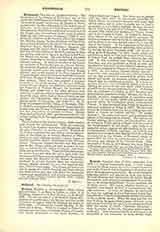

Krishnagar Diocese of (KISHNACRENSIS)., the boundaries of the Diocese of Krishnagar are: on the north, the Archdiocese of Calcutta and the Prefecture Apostolic of Assam; on the east, the Diocese of Dacca; on the south, the Bay of Bengal and the Archdiocese of Calcutta; on the west, the Archdiocese of Calcutta. The diocese is divided from northwest to southeast by the Ganges, into two portions nearly equal in extent. Since the last delimitation of territory (1889) it comprises five districts on the western side of the Ganges, viz.: Khulna, Jessore, Nadiya, Faridpur, and Murshidabad; and six districts on the eastern side of the Ganges: Rajshahi, Bogra, Maldah, Dinajpur, Rangpur, Jalpaiguri, and the native State of Kuch Behar. The first five districts belong to the civil province of Bengal and the other six to the new province called Eastern Bengal and Assam. The population of the whole diocese, according to the latest census (1900), is over eighteen millions. In 1855, six districts of the Vicariate Apostolic of Western Bengal, viz.: Jessore, Nadiya, Murshidabad, Rajshahi, Bogra and Maldah, were provisionally united under the name of Central Bengal Mission; and, at the request of the Vicar Apostolic of Western Bengal, three missionaries from the Seminary of Foreign Missions of Milan were sent out to work in that mission. There were then scarcely a hundred Catholics in the whole mission. In the year 1870 the Central Bengal Mission was definitely separated from the Vicariate of Western Bengal; the provinces of Bhutan and Assam and a few other districts were added to it; and the mission was created a prefecture Apostolic (June, 1870), Father Marietti being the first prefect. On September 1, 1886, it was constituted a diocese under the hierarchy, and Right Rev. Dr. F. Pozzi was consecrated first bishop, February 13, 1887. In 1889 the provinces of Bhutan and Assam were detached from the Diocese of Krishnagar, and the diocese was reduced to its present territory. Bishop Pozzi died in October, 1905, and was succeeded by the present bishop, Dr. S. Taveggia, consecrated November 4, 1906.
The Catholics of the diocese (August, 1909) number 6247, besides 691 catechumens. With the exception of about four hundred Eurasians and Europeans, all the other Catholics are native converts. Working in the diocese at present are: one bishop; eleven missionaries of the Seminary of Foreign Missions of Milan, residing in eight different stations; sixteen Sisters of Charity of Lovere (Italy), distributed in four different houses. There are thirteen churches and fifty mud-huts in the villages, which are used as places of worship, as shelters for the visiting missionary, and sometimes also as schoolrooms. There are three orphanages for native boys and three for native girls, with over two hundred children entirely supported by the mission and under the direction of the Sisters of Charity. Scattered in several districts there are twenty-five mission schools attended by over five hundred children, Christian and pagan. The Sisters of Charity are also in charge of a public hospital and three mission free dispensaries; and they also direct two homes for widows and catechumens, and a home for incurables.
F. ROCCA

